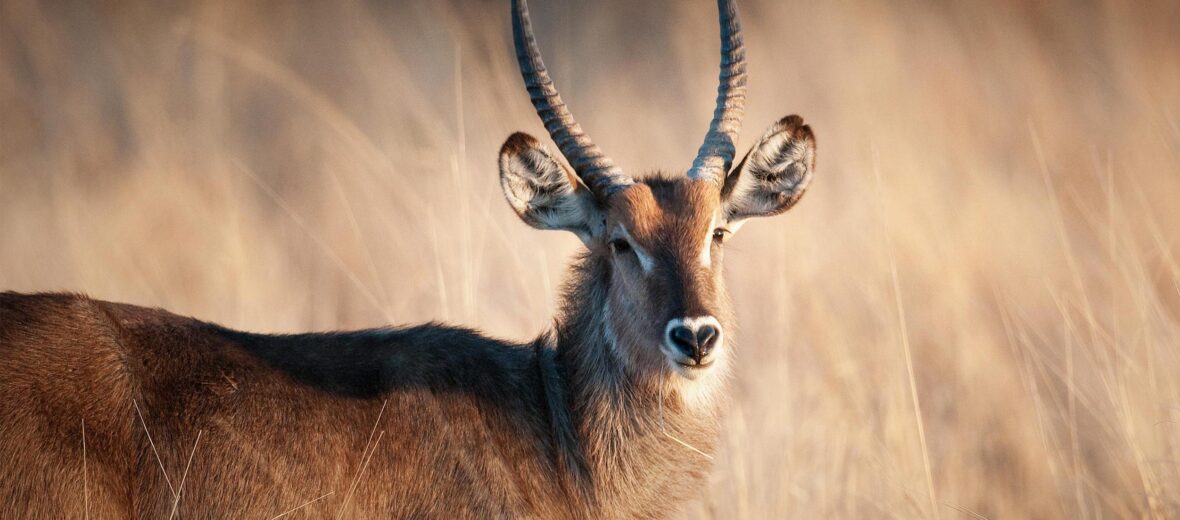
Found throughout sub-Saharan Africa, the waterbuck can be found in scrub and savanna areas near rivers, riverine forests, lakes, and valleys. There are 2 known species of waterbuck: the common and the defassa. The common waterbuck is listed as Least Concern by the IUCN, whereas the defassa is listed as Near Threatened. They both face the threats of hunting and trapping for bush meat. Both species’ populations are decreasing.
First the Stats…
Scientific name: Kobus ellipsiprymnus
Weight: Up to 660 lbs.
Length: Up to 7.9 feet
Height: Up to 4.5 feet
Lifespan: Up to 30 years
Now on to the Facts!
1.) Only the males sport spiral horns and they can reach up to 30 inches long.
2.) Waterbucks don’t tend to migrate unless there is a monsoon.
3.) They are gregarious in nature and gather into herds of up to 30 individuals.
4.) There are various herds: bachelor herds, territorial male herds, and nursery herds.
5.) As soon as the younger males begin developing horns, they are chased away by the territorial male. The exiled males join bachelor herds and look for available females.
But wait, there’s more on the waterbuck!
6.) Some females join spinster herds but these aren’t generally aggressive.
7.) Waterbucks are generally cathemeral (active during the day and night).
Did you know…?
Contrary to their name, these critters aren’t huge fans of the water. Rather they get their namesake due to their dependence on water and their habit of running to the water, when threatened.
8.) Sans the occasional alarm snort, these critters are silent.
9.) These creatures are excellent swimmers and will often retreat to the water in order to escape predation.
10.) Waterbucks are herbivorous graminivores (feed on grass) that feed mostly on a variety of grasses, but will also feast on leaves.
But wait, there’s more on the waterbuck!
11.) Males are polygynous (1 male mates with multiple females).
12.) Females undergo up to an 8 month gestation (pregnancy) that yields a single calf.
Did you know…?
During mating season, the waterbuck’s skin releases an oily substance that coats their fur. This greasy substance smells so pungent that it typically deters predators and also helps repel water.
13.) Calves are born mostly precocial (born with eyes open and able to stand and walk within 30 minutes.
14.) Moms will defend their calves ferociously, even though they don’t have horns.
15.) Males will rut during breeding season and sometimes the fights can go on for half an hour. Some fights end in death.
Now a Short Waterbuck Video!
Be sure to share & comment below! Also, check out the Critter Science YouTube channel. Videos added frequently!
Want to suggest a critter for me to write about? Let me know here.



